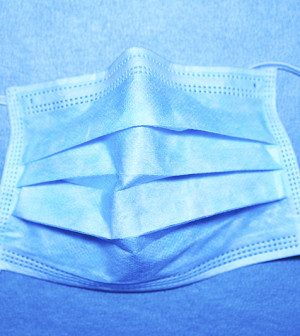- Navigating Your Midlife Crisis: Embracing New Possibilities
- City Raccoons Showing Signs of Domestication
- Mapping the Exposome: Science Broadens Focus to Environmental Disease Triggers
- One Week Less on Social Media Linked to Better Mental Health
- Your Brain Changes in Stages as You Age, Study Finds
- Some Suicide Victims Show No Typical Warning Signs, Study Finds
- ByHeart Formula Faces Lawsuits After Babies Sickened With Botulism
- Switch to Vegan Diet Could Cut Your Greenhouse Gas Emissions in Half
- Regular Bedtime Does Wonders for Blood Pressure
- Dining Alone Could Mean Worse Nutrition for Seniors
A Sneeze May Be Even Ickier Than You Thought

If you think your sneezes merely emit a delicate spray of tiny droplets into the space around you, think again.
New research from the Massachusetts Institute of Technology using slow-motion photography finds that, instead, sneezes expel a sticky sheet of fluid that first balloons and then breaks apart into long, viscous filaments.
Those filaments eventually do separate into a mist of fine droplets, said a team led by Lydia Bourouiba, who runs MIT’s Fluid Dynamics of Disease Transmission Laboratory.
“What we saw was surprising in many ways,” she said in a university news release. “We expected to see droplets coming out fully formed from the respiratory tract. It turns out that’s not the case at all.”
All of this research could lead to more effective ways to reduce the spread of illness, her team said.
“It’s important to understand how the process of fluid breakup, or fluid fragmentation, happens,” Bourouiba explained. Knowing how sneezing disperses droplets can help scientists map the spread of infections and identify people who may be “super-spreaders,” she said.
In prior research reported in 2014, her team found that coughs and sneezes emit “clouds” of gas that spread infectious droplets more than 200 times farther than would happen if they were just separate drops.
In the new study, Bourouiba’s team used high-speed cameras to record more than 100 sneezes from volunteers, who had their noses tickled to produce the sneeze. The photos — comprising a time span of under 200 milliseconds — were able to capture the precise moment when saliva is expelled from the mouth and launched into the air.
Sneezes also varied from person to person, the study found, because some people have more elastic saliva than others. For sneezers with the stickier saliva, expelled fluid tended to keep its stringy, filament shape longer, forming beads that in time became droplets.
All of this is important to help scientists “understand how the process of fluid breakup, or fluid fragmentation, happens,” Bourouiba said, and “the resulting prediction of the downstream range of contamination.”
She is currently setting up a special chamber in which she and medical research partners will be able to visualize sneezes, coughs and other methods of disease transmission.
“One of the important goals I have for the lab is to tackle cold and influenza,” Bourouiba said. “Sometimes the symptoms are difficult to distinguish. In the coming year, at different cold and influenza seasons, we will be recruiting human subjects whom we can work with to see them in infection and in health.”
The ultimate goal of the sneeze droplet research is to better predict and prevent the spread of disease.
“The way transmission routes are being quantified even today still rely on the traditional way that has prevailed for hundreds of years, which is talking to people to survey who they talked to, where did they go, etc.,” Bourouiba said.
“There are clear limits to the accuracy of the data acquired via this process, and we are trying to have more precise measures of contamination and ranges to root disease control and prevention strategies in the physical sciences,” she explained.
The study was published in the journal Experimental Fluids.
More information
The U.S. Centers for Disease Control and Prevention has more about sneezing and coughing.
Source: HealthDay
Copyright © 2025 HealthDay. All rights reserved.










